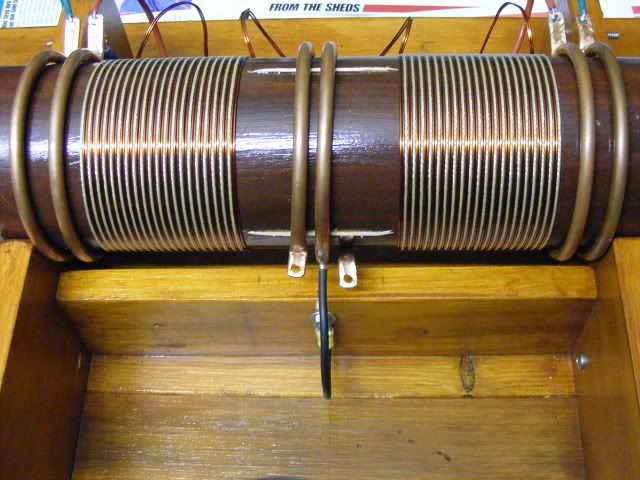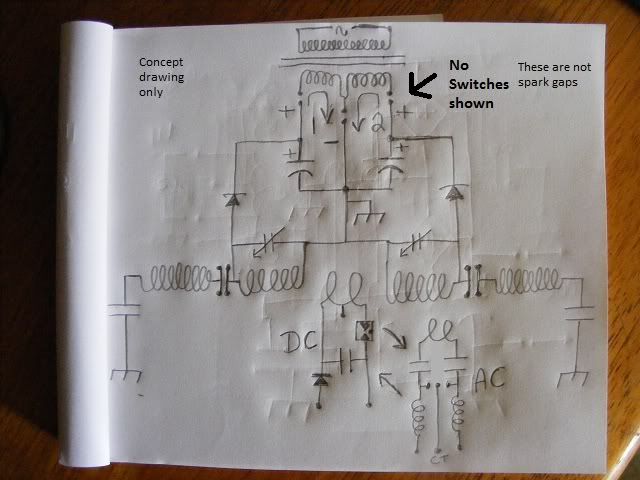Hi Dragon, I was thinking I should take the hint you gave and go with only 20 turns
(which is more like what Don used) haven't fully decided yet. I hope to have it
up and running within about a week.
Thanks for the compliment. I never used to like woodwork, but now i'm
I never used to like woodwork, but now i'm
enjoying it.
I also notice that in this picture.
http://i48.servimg.com/u/f48/17/28/55/62/device10.jpg
He has two 100 nF capacitors in parallel which if discharged at 20 Khz would be
quite a lot of input power. The resonant frequency of that setup would seem to
be about 250 - 260 Khz. Looks like about 17 or 18 turns on each side of the
secondary.
(which is more like what Don used) haven't fully decided yet. I hope to have it
up and running within about a week.
Thanks for the compliment.
 I never used to like woodwork, but now i'm
I never used to like woodwork, but now i'menjoying it.
I also notice that in this picture.
http://i48.servimg.com/u/f48/17/28/55/62/device10.jpg
He has two 100 nF capacitors in parallel which if discharged at 20 Khz would be
quite a lot of input power. The resonant frequency of that setup would seem to
be about 250 - 260 Khz. Looks like about 17 or 18 turns on each side of the
secondary.


 How ironic.
How ironic.







 ) I noticed if
) I noticed if , considering that the scope trace is completely
, considering that the scope trace is completely




 so when the
so when the
Comment